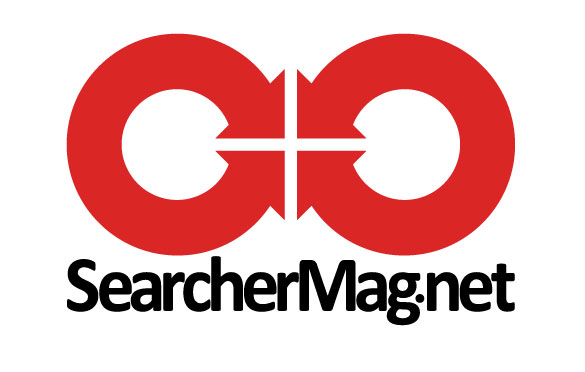About 80% of businesses are using social media to promote themselves. With roughly 3.7 billion social media users all over the world, companies need to be present on at least one platform. For insurance companies, social media can be a lead generation and sales tool.
If companies implement the best and most-effective online marketing practices, social media is a surefire way to convert more prospects and nurture existing customers.
Below is a list of tips to leverage the power of social media:
1. Set SMART goals
Every successful social media campaign starts with a plan. Before you create any posts or write copies, you should have goals in mind. Write down SMART goals and use them as an outline of your marketing initiatives.
Specific: Ensure you have clear and defined goals. State what you want to reach in an x amount of time. For example: “We want to increase our lead conversion by 30% in 6 months.”
Measurable: Know how you will be able to track and monitor your progress. Incorporate benchmarks and metrics that will help you gauge how far or close you are to your goals.
Achievable: Do not set goals that seem impossible to achieve. Having goals like increasing sales by 200% in 30 days is not realistic. Instead, set reasonable goals that your team can accomplish and consider any roadblocks upfront.
Relevant: Identify the reasons behind your social media goals. Each campaign should be aligned with the goals of the organization. A relevant goal should be geared towards brand awareness and profitability.
Time-bound: No goal can be accomplished overnight. Also, a goal that is not time-constrained does not promote a sense of urgency. To measure your success, set a timeline for when you want your team to start and finish the initiative. It will make them more challenged and dedicated to their work.
2. Create a plan for each platform
One common mistake that most businesses and marketers make is they treat all social media channels the same. Facebook is different from Instagram and LinkedIn is not similar to Pinterest or Twitter. Posting the same content to all of these platforms may save you time but provide you with little and negative results.
For example, posting a humorous or cute photo of a cat may work on Instagram but professionals on LinkedIn may find it inappropriate and unprofessional. To avoid this mistake, it is important to study how each platform works. Each social media channel has its features, strengths, and disadvantages. Learning how users interact and behave on each platform will help you create a tailored plan and see meaningful results.
3. Create and Utilize a Social Media Calendar
In this digitally driven world, time can be your enemy. You may have created a solid marketing plan but if you cannot implement it timely and accurately, it is just a wasted effort. Even if you have assigned tasks to your team members, there will be a tendency that they might forget them or they may stumble upon higher priority tasks and delay your social media marketing initiatives.
Creating a social media calendar where you can organize your social media campaigns and marketing content is a brilliant way to maximize results. It also gives you an overview of what content your team is sharing on each date and helps you plan ahead. Creating posts in advance saves time and reduce the possibility of due projects. Social media calendar helps the team to collaborate better and know what campaigns need to be done in a given schedule. This helps businesses to post strategically and not to throw out posts at the last minute.
4. Follow Correct Image Sizes
Creating social media posts for each social media channel can be time-consuming. Others are using the same post for all platforms and disregarding the image sizing guidelines. This results in poor branding and bad user experience. Imagine a stretched and cropped image posted on your social media. It is unattractive. Instead of taking any shortcuts, it is always beneficial to follow the sizing requirements.
Facebook Image sizes:
Profile photo: 180 x 180 pixels
Cover Photo: 830 x 312 pixels
Post: 1080 x 1080 pixels
Event Cover photo: 1200 x 628 pixels
Video: 1280 x 720 pixels
Instagram Image sizes:
Profile photo: 110 x 110 pixels
IGTV: 1080 x 1920 pixels
Reels: 1080 x 1920 pixels
Post: 1080 x 1080 pixels
Story: 1080 x 1080 pixels
LinkedIn Image sizes:
Company logo: 300 x 300 pixels
Company banner photo: 1128 X 191 pixels
Post: 1200 x 1200 pixels
Profile picture: 400 x 400 pixels
Twitter Image sizes:
Profile photo: 400 x 400 pixels
Header photo: 1500 x 1500 pixels
Post: 1200 x 675 pixels
Video: 720 x 720 pixels
5. Post Consistently
Don’t expect to see positive results when you are just posting content at random dates. Consistency is key. Make sure that you have prepared enough content throughout the week. Sharing the first post on Monday and the second one on Thursday will not reap great results. The right objective is to post daily. Your audience can have a bad perception of your business if you did not make any posts for 2-3 weeks and then suddenly bombard them with multiple posts in a day.
Fill your social media calendar with content ideas. The graphics should also be consistent. Posting blurred images and low-quality videos can turn your visitors away. Maintaining consistency in all your social media posts strengthens your brand credibility and makes more people trust your brand.
6. Post at the Right Times
Since there are millions of daily social media users, a lot of content is shared within minutes. Your content can easily get buried together with other posts and miss the chance to reach your targeted audience.
Fortunately, there are analytics and tools that can help you determine what are the best times of day to post. Consider the timezone and the behavior of your audience on each platform. What hours of the day do they most often Facebook? In what hours do they visit Twitter? Using online resources to analyze the key metrics, it is ideal to post during peak hours. If posting on Facebook at 9 am on Saturday and tweeting on Twitter at 3 pm on Wednesday produces higher engagements, then take advantage of it. Study the data and learn ways how to reach a wider audience.
7. Know the Effective Posting Frequency
Generally, it is recommended to post at least once a day and no more than twice a day on social media. Doing more can annoy your audience and make them uninterested in your brand. Posting too much within a day leads to 30% of unfollows and unsubscribed. Always keep posts at a minimum and know the right timing.
Posting frequency also applies to the types of posts you are sharing. Instead of sharing two blog links a day, try to mix it up with other posts. For example, you can post an infographic at 9 am and a video testimonial about your product at 3 pm.
8. Use Scheduling Tools to Save Time
You already have a social media calendar and prepared the content but still miss posting it at the specified time and date. This is because you forget it or you are busy doing other tasks. To save time and to make sure that each content goes to the right platform at the right time, you can use automation tools.
With post-scheduling software, you can schedule posts weeks in advance and stay on top of the industry trends. By letting the tool do the work, you can focus more on enhancing customer service, creating more content, and handling other important aspects of your business.
9. Don’t Forget to Include CTAs
If you are in the insurance industry, one of your goals in your social media content is to drive traffic to your website to attract more leads. Adding call-to-actions to your social media posts is vital. This tells your audience to take the desired action and check your website and landing pages. CTAs make your audience go further down your sales funnel which eventually, you can convert into paying customers.
You can include links to your blogs, services page, and contact information in your captions. Doing this also helps you identify what call-to-action works best and what triggers the audience to engage on your website.




